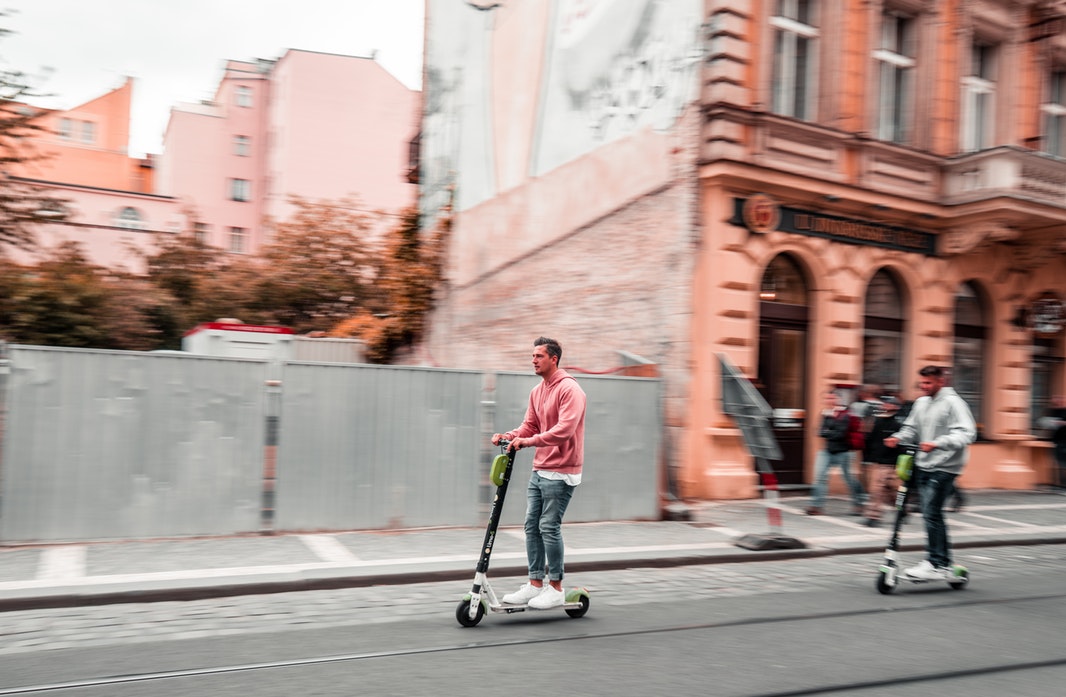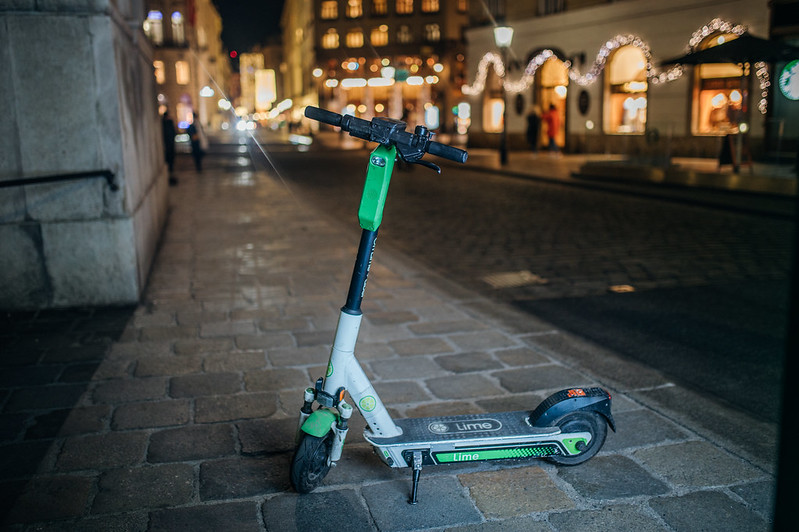Ever since Germany’s government voted to allow them onto the roads this June, they’ve appeared in their thousands across Berlin. The concept is simple: the scooters can be rented using an app for a fee of just one euro to start your journey, plus another 15 cents for every minute they’re ridden. Once you arrive at your destination, you can park the scooter up anywhere and continue on your way.
The eight or so different startups currently battling it out in the capital’s e-scooter market all present themselves as offering a service that is part of a smart, sustainable mobility concept. According to them, e-scooters are not just convenient, they’re green too because they offer an environmentally-friendly alternative to cars. One provider even declares that their scooters are helping to “build a cleaner, safer, more connected world”. But what does that look like in reality?
Convenience when covering “the last mile”
In theory, e-scooters could improve city traffic if people leave their cars at home and opt to use scooters instead. While they’re not designed to cover long trips, for shorter car journeys e-scooters seem to represent a real alternative. Categorising them as a form of “micromobility”, consulting firm McKinsey in a recent report claims that “micromobility could theoretically encompass all passenger trips of less than eight kilometres, which account for as much as 50 to 60 percent of today’s total passenger miles travelled in China, the European Union, and the United States.” The city of Portland published similar findings after a three-month pilot project: A survey showed that 34 percent of the inhabitants and 48 percent of the visitors had used a scooter instead of their own car or taxi, or a carpool service such as Uber.
The fact that you can leave them anywhere means that they can be driven literally door-to-door and offer a convenient way to cover the so-called “last mile”. This term refers to the distance between your front door and the train station or bus stop, or the distance from the stop to your final destination. Giving people a convenient and easy way to cover those short distances could encourage more people to take public transport rather than getting into their cars. Sure, many people could just walk or cycle instead – but not those with restricted mobility, while taking the bicycle on the train can be inconvenient and expensive when (like in Berlin) you have to buy a ticket for your bike too.
Eco-friendly alternative or tourist toy?
So are electric scooters really an effective environmentally-friendly form of transportation? There’s no simple answer. How green they truly are depends on whether the people using them really are leaving their car behind or if they’re riding the scooters around for the fun of it and thus producing additional traffic. In France, where the scooters were introduced a year ago, around a third of all users are thought to be tourists.
In Berlin in particular, trips on e-scooters are probably most likely to directly replace walks or bike rides – the two most unbeatably sustainable forms of transportation around. Not to mention that the infrastructure of the city is completely unsuitable in most areas. Berlin is still largely built for cars. And with more and more people switching to bicycles and other eco-friendly options, there is to limited space for non-car users on the roads. While e-scooter users in Germany are restricted to using them in bike paths and oficially banned from riding on the pavement, Berlin’s inadequate and badly maintained bike-path infrastructure has already seen e-scooter riders resort to driving in the roads alongside car traffic. Instead of new carparks and new multi-lane roads, better maintained and wider bike lanes are needed that offer enough space to be used by scooters as well.
The way the scooters are produced is also problematic. They are manufactured almost exclusively in China, often using energy from coal-fired power plants. Battery production is highly energy-intensive and sourcing the lithium for the batteries and recycling them further down the line both pose an environmental risk. So considering their production is so resource-intensive, it’s extra important that the scooters have a long lifespan. But how long they last varies depending on the hardware and the amount that they are used. In general, experience from other cities shows that their lifespan is extremely short due to either low quality parts and in some cases deliberate vandalism. One study from Louisville, Kentucky put the average life span at just 28 days. Companies will have to do all they can to make their hardware more robust and also by recycling and reusing different parts when the scooters breakdown.
On top of all that, cars and trucks have to travel around the city day and night to collect up the scooters and take them off to charge their batteries – not the most environmentally-friendly system in the world. And the electricity used to charge the scooters isn’t renewable either. Germany’s energy is still predominantly sourced from fossil fuels and nuclear power.
It’s difficult to say what the environmental impact of e-scooters really is. Calling them “zero carbon” transportation is certainly not (yet) true. But it’s clear that scooters will only ever really reduce traffic and help the environment if they are replacing CO2-intensive vehicles. At the same time, the environmental impact of the scooters depends heavily on the energy that is used to charge them, their lifespan and the development of less resource-intensive and recyclable batteries. Ensuring that you yourself use them responsibly is a good place to start.







